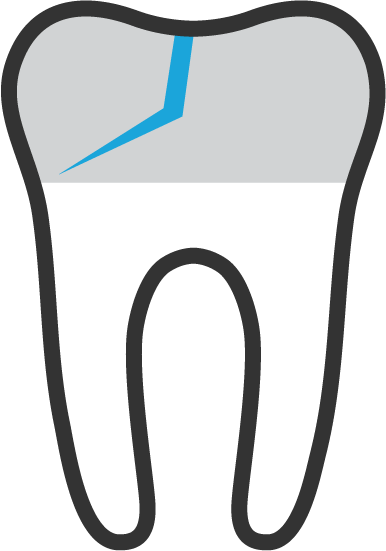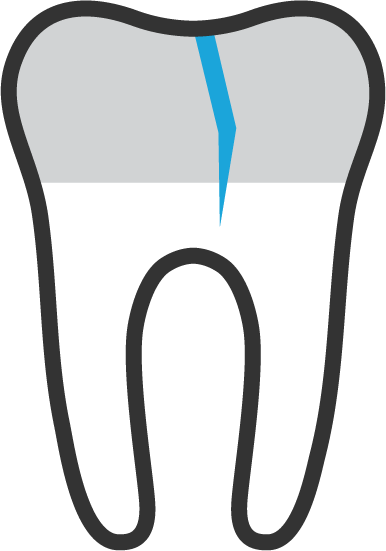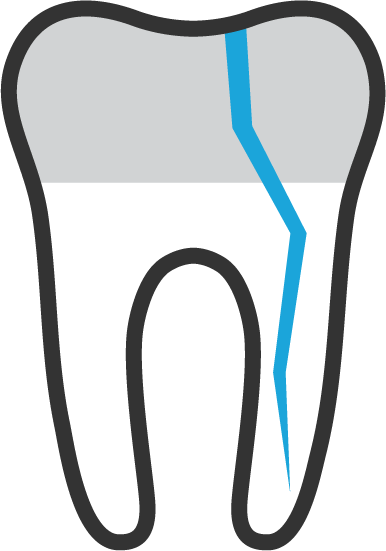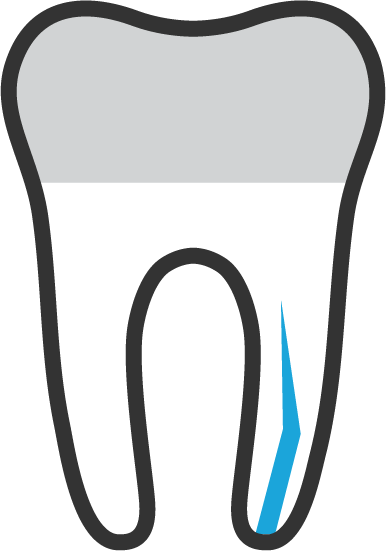Cracked Tooth
Craze Lines
Tiny cracks that only affect the outer enamel of the tooth. More common in adults, are superficial, and are usually of no concern.
Fractured Cusp
May result when a cusp becomes weakened, which may break off or be removed by a dentist. It rarely damages the pulp, so a root canal is often not necessary; however, your dentist will usually restore the tooth with a full crown.
Cracked Tooth
Extends from the chewing surface of the tooth and vertically migrates towards the root. The crack may also extend below the gum line, and possibly further into the root. Damage to the pulp is common and root canal treatment is usually necessary. A cracked tooth that isn’t treated will worsen, resulting in the loss of the tooth. Early detection is essential.
Split Tooth
Usually the result of an untreated cracked tooth. It can be identified by a crack with distinct segments. This type of tooth can never be saved intact, however the position and extent of the problem will determine if any part of the tooth can be saved.
Vertical Root Fracture
Often begins at the root and extends towards the chewing surface of the tooth. They show minimal symptoms and may go unnoticed. Treatment involves endodontic surgery if a portion of the tooth can be saved by removal of the fractured root. Otherwise the tooth will have to be extracted.

Fractured Cusp
Results when a cusp becomes weakened. May break off or be removed by a dentist.

Cracked Tooth
Extends from the chewing surface and vertically migrates toward the root.

Split Tooth
Can be identified by a crack with distinct segments.

Vertical Root Fracture
Begins in the root and extends toward the chewing surface.
Signs and Symptoms
Cracked teeth cause many types of symptoms, including pain when chewing, temperature sensitivities, or even pain with the release of biting pressure. It’s also common for pain to come and go, making it difficult to diagnose the cause of discomfort.
Pre-Op Instructions
The treatment and outcome for your tooth depends on the type, location and extent of the crack. We will discuss the procedure in detail with you once the initial exam is done so you know exactly what to expect.
Post-Op Instructions
We will discuss post-op instructions in detail with you once the procedure is done so you know exactly what to expect.
References
Are you interested in learning more about cracked teeth? This reference from the American Association of Endodontics (AAE) is a great starting point.